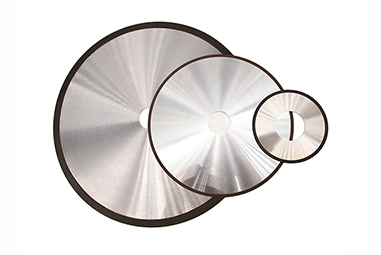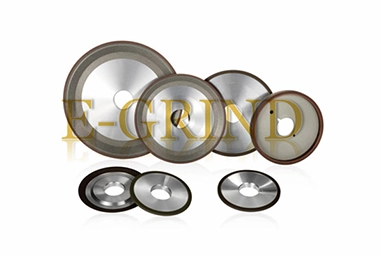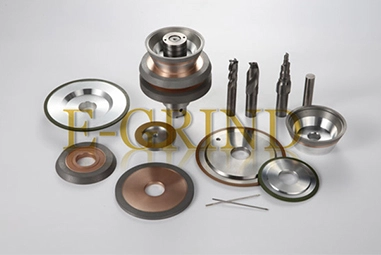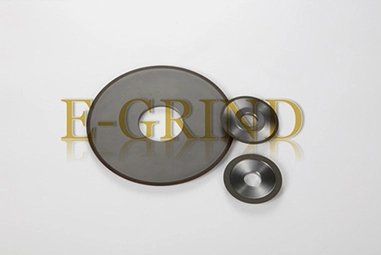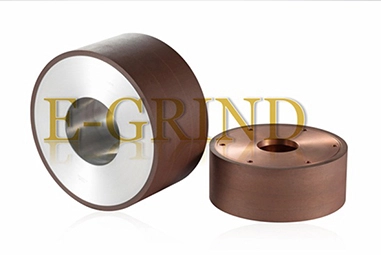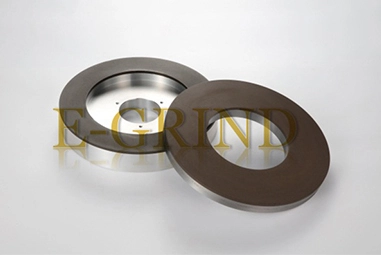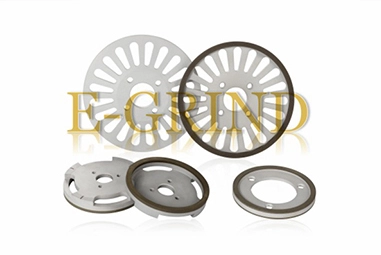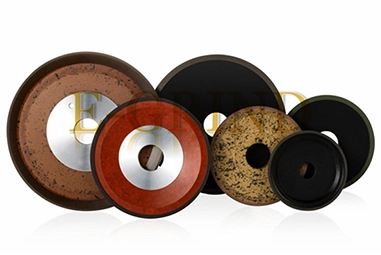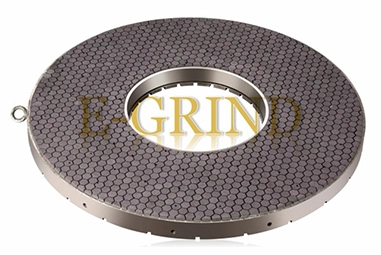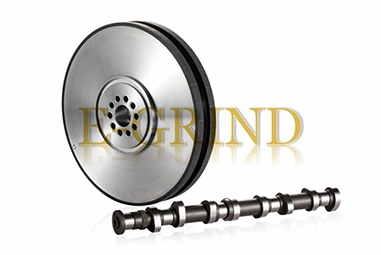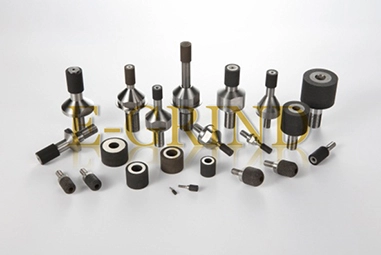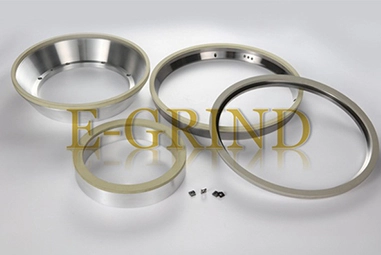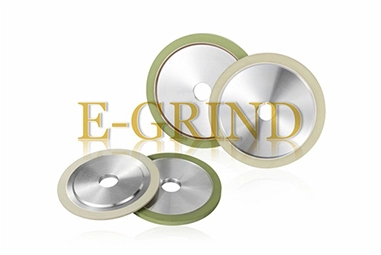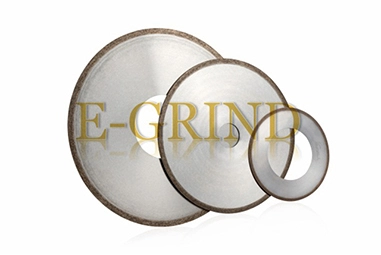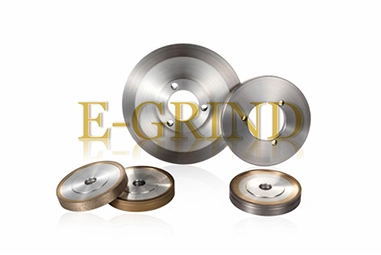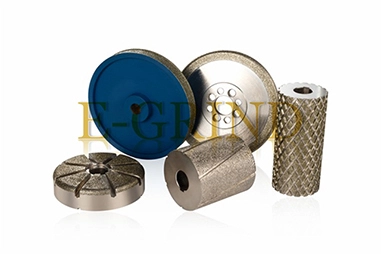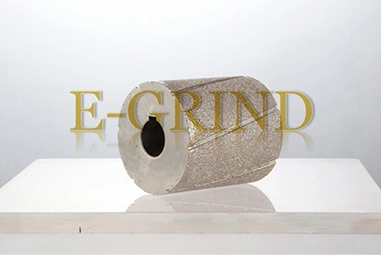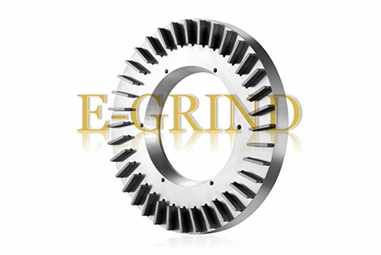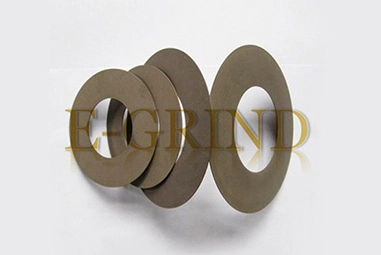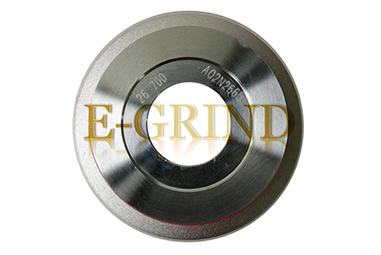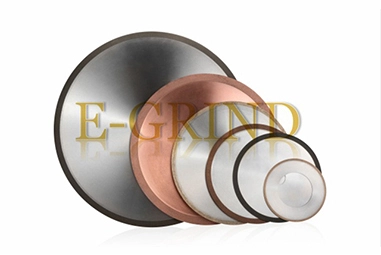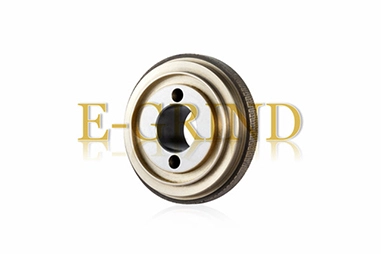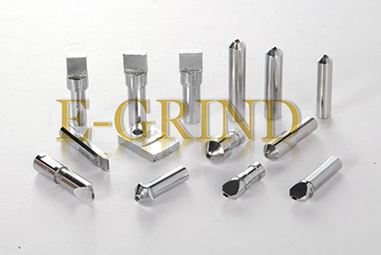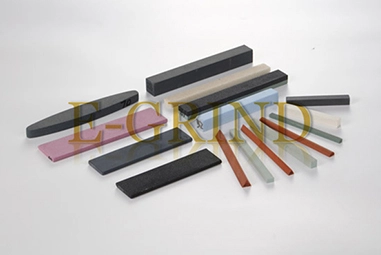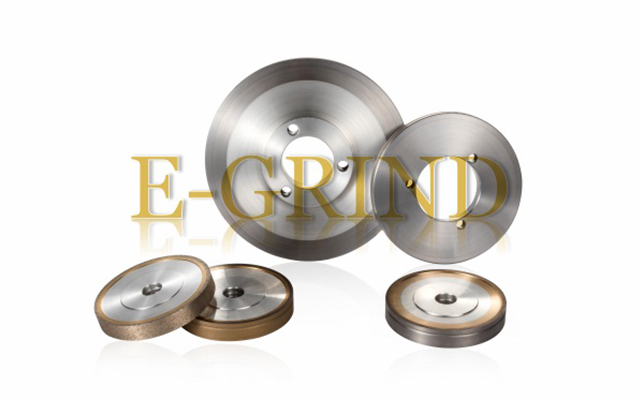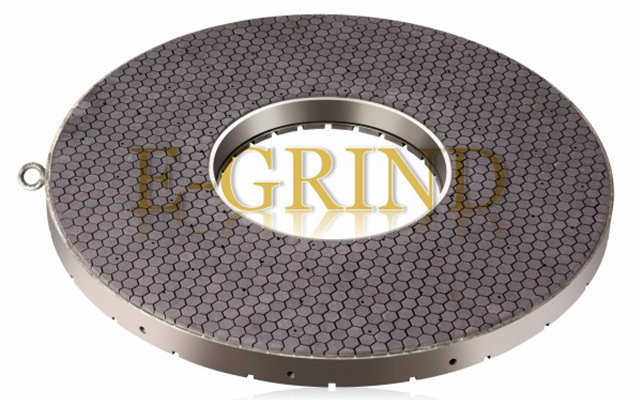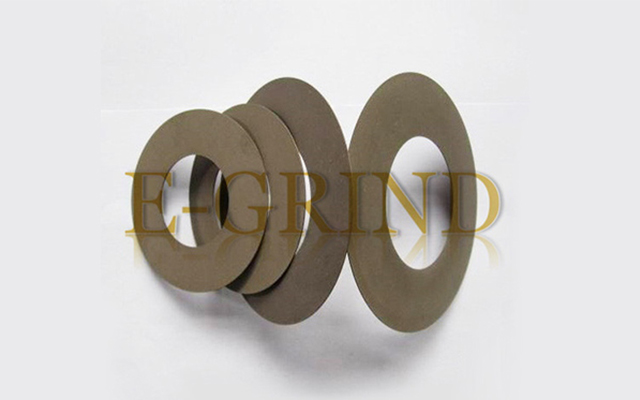As one of the professional abrasive grinding wheel manufacturers, E-grind provides different types of diamond grinding wheels and CBN grinding wheels for sale. All our products are built to meet a exact requirements and specifications of our clients. Explore comprehensive insights into grinding defects and effective solutions with our expert resources.
| No. | Grinding Type | Grinding defects | Reasons | Solutions |
| 1 | Cylindrical grinding | Straight ripple on workpiece surface | Unbalance wheel | Correct balance of the grinding wheel |
| 2 | Cylindrical grinding | Straight ripple on workpiece surface | Wheel too hard, or uneven hardness | Chose the correct wheel according the characteristics of workpiece material and the performance of grinding wheels. |
| 3 | Cylindrical grinding | Straight ripple on workpiece surface | Wheel become blunt, less sharp | Master the characteristics of workpiece and precision changing. Dress the wheel in time. |
| 4 | Cylindrical grinding | Straight ripple on workpiece surface | Uneven wear | Master the characteristics of workpiece and precision changing. Dress the wheel in time. |
| 5 | Cylindrical grinding | Straight ripple on workpiece surface | Less sharp after dressing | The dressing allowance is too small, or diamond grits wear too much and lost the sharping edge. Use the right dressing method and dressing allowance according the grinding requirements. |
| 6 | Cylindrical grinding | Spiral ripple on workpiece surface | Wheel too hard | Chose the correct wheel according the characteristics of workpiece material and the performance of grinding wheels. |
| 7 | Cylindrical grinding | Spiral ripple on workpiece surface | The dressing allowance is too small | Use the right dressing method and dressing allowance according the grinding requirements. |
| 8 | Cylindrical grinding | Spiral ripple on workpiece surface | Unstable thermal deformation of the machine when dress the wheel. | Master the characteristics of workpiece and precision changing. Dress the wheel in time. |
| 9 | Cylindrical grinding | Spiral ripple on workpiece surface | Untimely dressing, uneven wear | Master the characteristics of workpiece and precision changing. Dress the wheel in time. |
| 10 | Cylindrical grinding | Spiral ripple on workpiece surface | Insufficient grinding fluid when dressing | Master the characteristics of workpiece and precision changing. Dress the wheel in time. |
| 11 | Cylindrical grinding | The surface of workpiece is roughened and scratched | Abrasive particles falling off | Master the characteristics of workpiece and precision changing. Dress the wheel in time. |
| 12 | Cylindrical grinding | The surface of workpiece is roughened and scratched | Abrasive particles falling off | Master the characteristics of workpiece and precision changing. Dress the wheel in time. |
| 13 | Cylindrical grinding | The surface of workpiece is roughened and scratched | Too rough grit size | Chose the correct wheel according the characteristics of workpiece material and the performance of grinding wheels. |
| 14 | Cylindrical grinding | The surface of workpiece is roughened and scratched | There are empty grains on wheel surface after dressing | Use the grinding wheel with coarse grit to work with soft metal or other non-ferrous metal. After the prominent grains wear off then work with workpiece. |
| 15 | Cylindrical grinding | Burning on workpiece surface | Bond is too hard, or grit size is too fine | Chose the correct wheel according the characteristics of workpiece material and the performance of grinding wheels. |
| 16 | Cylindrical grinding | Burning on workpiece surface | Wrong grit type | Chose the correct wheel according the characteristics of workpiece material and the performance of grinding wheels. |
| 17 | Cylindrical grinding | Burning on workpiece surface | Wrong bond type | Chose the correct wheel according the characteristics of workpiece material and the performance of grinding wheels. |
| 18 | Cylindrical grinding | Burning on workpiece surface | Dressing allowance is too small | Use the right dressing method and dressing allowance according the grinding requirements. |
| 19 | Cylindrical grinding | Burning on workpiece surface | Wheel become blunt, less sharp | Master the characteristics of workpiece and precision changing. Dress the wheel in time. |
| 20 | Cylindrical grinding | Workpiece is tapered | Uneven wear or less sharp wheel | Master the characteristics of workpiece and precision changing. Dress the wheel in time. |
| 21 | Cylindrical grinding | Workpiece is tapered | Wrong dressing method | Use the right dressing method and dressing allowance according the grinding requirements. |
| 22 | Cylindrical grinding | Workpiece is drum shaped or sallde shaped | Poor forming accuracy | Master the characteristics of workpiece and precision changing. Dress the wheel in time. |
| 23 | Cylindrical grinding | Workpiece is drum shaped or sallde shaped | Less sharp wheel | Master the characteristics of workpiece and precision changing. Dress the wheel in time. |
| 24 | Cylindrical grinding | The surface of workpiece is roughened and scratched | The corner is worn, or the generatrix is not straight | Master the characteristics of workpiece and precision changing. Dress the wheel in time. |
| 25 | Cylindrical grinding | Perpendicularity of workpiece end face out of tolerance | The contact area between wheel end face and workpiece is too big | Dress the wheel to reduce the contact area or change appropriate wheel |
| 26 | Cylindrical grinding | Perpendicularity of workpiece end face out of tolerance | Wheel become less sharp after grinding | Master the characteristics of workpiece and precision changing. Dress the wheel in time. |
| 27 | Cylindrical grinding | Roundness of workpiece out of tolerance | Uneven wear or less sharp wheel | Master the characteristics of workpiece and precision changing. Dress the wheel in time. |
| 28 | Internal grinding | Straight ripple on workpiece surface | The extension shaft is long and thin with poor rigidity | Master the characteristics of workpiece and precision changing. Dress the wheel in time. |
| 29 | Internal grinding | Straight ripple on workpiece surface | Less sharp wheel | Master the characteristics of workpiece and precision changing. Dress the wheel in time. |
| 30 | Internal grinding | Straight ripple on workpiece surface | Wheel diameter is too big to case vibration | Master the characteristics of workpiece and precision changing. Dress the wheel in time. |
| 31 | Internal grinding | Straight ripple on workpiece surface | The contact length between wheel and workpiece is too long to case vibration | Dress the wheel to reduce the contact area or change appropriate wheel. |
| 32 | Internal grinding | Spiral ripple on workpiece surface | Poor contact between wheel and workpiece | Master the characteristics of workpiece and precision changing. Dress the wheel in time. |
| 33 | Internal grinding | The surface of workpiece is roughened and scratched | The contact area between wheel and workpiece is too big | Dress the wheel to reduce the contact area or change appropriate wheel. |
| 34 | Internal grinding | Workpiece is tapered | Wheel is too soft | Chose the correct wheel according the characteristics of workpiece material and the performance of grinding wheels. |
| 35 | Internal grinding | Workpiece is tapered | Less sharp wheel | Master the characteristics of workpiece and precision changing. Dress the wheel in time. |
| 36 | Internal grinding | Burning on workpiece surface | Wheel diameter is too big | Reduce the wheel diameter. |
| 37 | Internal grinding | Burning on workpiece surface | Wheel become blunt, less sharp | Master the characteristics of workpiece and precision changing. Dress the wheel in time. |
| 38 | Internal grinding | Workpiece is trumpet shaped | When grinding the inner hole with groove, the groove is trumpet shape because wheel is too thin. | Increase the wheel width. |
| 39 | Internal grinding | Workpiece is trumpet shaped | When grinding the inner hole with a short shoulder hole, the hole show trumpet shape because wheel over workpiece too much. | Change smaller width wheel or reduce the wheel diameter of the part beyond the workpiece |
| 40 | Internal grinding | Workpiece is trumpet shaped | When grinding the inner hole with keyway, the grinding wheel is too wide to cause the deform angle on keyway. | Reduce the wheel thickness, or insert a bakelite or metal block into the keyway. |
| 41 | Surface grinding | Ripple on workpiece surface | Unbalance wheel | Balance the wheel correctly. |
| 42 | Surface grinding | Ripple on workpiece surface | Wheel bond is too hard | Chose the correct wheel according the characteristics of workpiece material and the performance of grinding wheels. |
| 43 | Surface grinding | Ripple on workpiece surface | Uneven hardness | Change better quality wheel. |
| 44 | Surface grinding | Ripple on workpiece surface | Wheel become blunt, less sharp | Master the characteristics of workpiece and precision changing. Dress the wheel in time. |
| 45 | Surface grinding | Straight scratches on workpiece surface | Wheel become blunt, less sharp | Master the characteristics of workpiece and precision changing. Dress the wheel in time. |
| 46 | Surface grinding | Burning on workpiece surface | Bond is too hard, or grit size is too fine | Chose the correct wheel according the characteristics of workpiece material and the performance of grinding wheels. |
| 47 | Surface grinding | Burning on workpiece surface | Wheel become blunt, less sharp | Master the characteristics of workpiece and precision changing. Dress the wheel in time. |
| 48 | Surface grinding | Burning on workpiece surface | The dressing allowance is too small | Use the right dressing method and dressing allowance according the grinding requirements. |
| 49 | Surface grinding | The side of workpiece is trumpet shaped | Chose wrong wheel | Chose the correct wheel according the characteristics of workpiece material and the performance of grinding wheels. |
| 50 | Surface grinding | The side of workpiece is trumpet shaped | Less sharp wheel | Master the characteristics of workpiece and precision changing. Dress the wheel in time. |
| 51 | Surface grinding | The parallelism or flatness of the surfaces of workpiece is out of tolerance | Less sharp wheel | Dress the wheel in time, can make beveled slots on wheel OD face. |
| 52 | Surface grinding | The parallelism or flatness of the surfaces of workpiece is out of tolerance | Chose wrong wheel | Chose the correct wheel according the characteristics of workpiece material and the performance of grinding wheels. |
| 53 | Centerless grinding | Roundness of workpiece out of tolerance | Less sharp wheel | Master the characteristics of workpiece and precision changing. Dress the wheel in time. |
| 54 | Centerless grinding | Roundness of workpiece out of tolerance | Unclean surface of guide wheel | Clean the guide wheel in time. |
| 55 | Centerless grinding | Roundness of workpiece out of tolerance | The guide wheel is not rounded or out of roundness due to long working time | Pay attention on dressing in time. |
| 56 | Centerless grinding | Workpiece is prismatic circle | Unbalance grinding wheel or guide wheel | Re-balance the grinding wheel or guide wheel. |
| 57 | Centerless grinding | Cylindricity of workpiece out of tolerance | The wheel bond is too soft when plunge grinding | Chose harder wheel, dress the wheel in time, change smaller infeed, increase more spark out grinding. |
| 58 | Centerless grinding | Cylindricity of workpiece out of tolerance | Wrong dressing method | Adjust the position of the dresser according to the taper direction of the workpiece and re-dress the grinding wheel. |
| 59 | Centerless grinding | Cylindricity of workpiece out of tolerance | The grinding wheel and guide wheel wear too much, lost the original shape | Dress the grinding wheel and guide wheel in time, ensure the correct shapes. |
| 60 | Centerless grinding | Vibrating marks on workpiece surface | Unbalance grinding wheel or guide wheel | Re-balance the grinding wheel or guide wheel. |
| 61 | Centerless grinding | Vibrating marks on workpiece surface | Wheel become blunt, or too hard bond | Master the characteristics of workpiece and precision changing. Dress the wheel in time. |
| 62 | Centerless grinding | Vibrating marks on workpiece surface | Wheel grit size is too fine | Chose the correct wheel according the characteristics of workpiece material and the performance of grinding wheels. |
| 63 | Centerless grinding | Vibrating marks on workpiece surface | The grinding wheel is dressed too rough or too fine | Use the right dressing method and dressing allowance according the grinding requirements. |
| 64 | Centerless grinding | Burning on workpiece surface | The grinding wheel is dressed too fine, or the wheel is less sharp | Use the right dressing method and dressing allowance according the grinding requirements. |
| 65 | Centerless grinding | Burning on workpiece surface | Wheel bond is too hard | Chose the correct wheel according the characteristics of workpiece material and the performance of grinding wheels. |
| 66 | Centerless grinding | Roughness of workpiece surface is out of tolerance | Grit size is too coarse | Chose the correct wheel according the characteristics of workpiece material and the performance of grinding wheels. |
| 67 | Centerless grinding | Roughness of workpiece surface is out of tolerance | Dressing allowance is too big | Use the right dressing method and dressing allowance according the grinding requirements. |
| 68 | Centerless grinding | Roughness of workpiece surface is out of tolerance | Wheel bond is too soft | Chose the correct wheel according the characteristics of workpiece material and the performance of grinding wheels. |
| 69 | Centerless grinding | Workpiece size dispersion | The new dressed wheel is less sharp, or diamond grits wear too much. | Change new wheel or change the gridning wheel rotation direction. |
| 70 | Camshaft grinding | The accuracy of cam lift curve is out of tolerance | The wheel diameter is out of allowed range. | Change smaller diameter wheel. |
| 71 | Guideway grinding | Workpiece deformation or error out of tolerance | Chose wrong wheel | Chose the suitable grinding wheel according to the workpiece material and hardness. When workpiece hardness is over HRC 64, shall chose CBN wheel instead abrasive wheel. |
| 72 | Guideway grinding | Workpiece deformation or error out of tolerance | Wheel become blunt, less sharp | Master the characteristics of workpiece and precision changing. Dress the wheel in time. |


